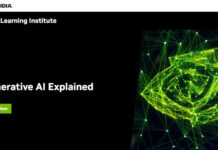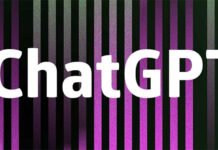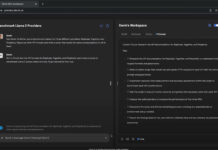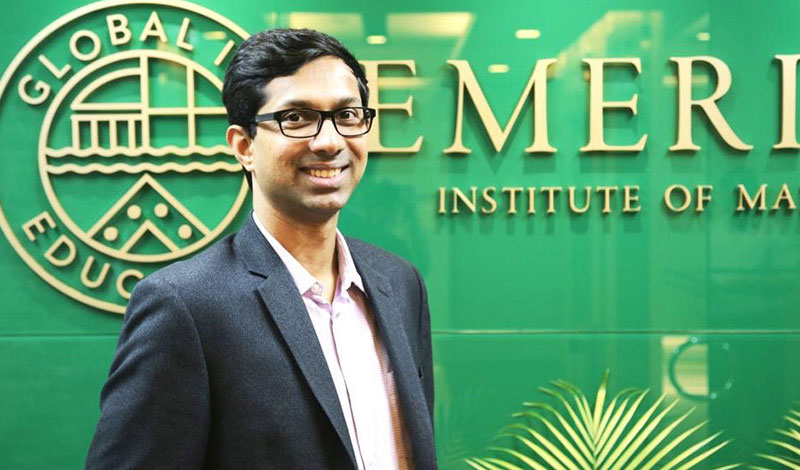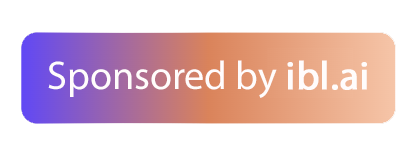The Promises and Challenges of Emerging Markets in Higher Education: Emeritus CEO Ashwin Damera in Conversation
Henry Kronk | IBL News
Numerous U.S.-based online program managers (OPM) have made the news lately for better or for worse. But what about similar companies operating in different countries?
Emeritus currently employs over 400 people and partners with many top U.S. institutions, but has offices in India, Dubai, Singapore, and Mexico. And they don’t exactly consider themselves an OPM.
IBL News recently contacted CEO and Co-Founder Ashwin Damera to learn more about the value proposition involved in such a decentralized business model.
Henry Kronk: How did you come to found Emeritus in the first place?
Ashwin Damera: I grew up in India. I worked at Citigroup for five years. I then went to do my MBA at Harvard Business School. After that I came back to start an online travel company. It was funded by Sequoia. We started in 2005, I ran it for four years. Eventually, we were acquired by Travelocity. I had a year where I spent some time for Travelocity Asia Pacific, just advising them about regional strategy in the online travel space.
At that point in time, I met my co-founder Chaitanya Kalipatnapu who had gone to INSEAD and was working there at the time. When I was thinking about what I wanted to do next, I was looking at two sectors: education and healthcare. Both have the ability to touch peoples’ lives.
So we kind of joined hands and started the parent company of Emeritus, which is called Eruditus, in 2010. Chaitanya [Kalipatnapu] went to INSEAD, I went to Harvard. Those are obviously great places to go and it actually changed our careers and made us very successful. It had a catalyzing effect. So we wanted to see how we could make these universities more accessible to a larger number of people across the world.
That was our mission statement then; it’s our mission statement today.
We started in 2010, INSEAD was our first partner, and we started offering programs in the region. We started in India and then moved to Dubai and Asia Pacific. The idea was to get students to sign up for these classroom programs initially, delivered partly on campus, partly in region, and partly online.
In 2015, we created Emeritus to say, listen, not everyone can come to a classroom program, for many reasons, right? (Travel, price, days away from work.) So why not leverage online? MOOCs had already launched, schools were warming up to the idea of online delivery. But we took a different approach. We wanted high-touch online because, at the end of the day, the learning outcomes matter.
What we loved about our educational background was the fact that you had some contact with the faculty, you had peer-to-peer learning, you had projects and assignments and you got feedback. So we tried to incorporate all of that into what is now known as SPOC (small private online courses), which we offer through Emeritus.
We went to our partners at that time, MIT, Columbia, and Dartmouth. They became the first three schools. Today that has expanded. We work with Wharton School of Business, Kellogg School of Management, Berkeley, London Business School, Cambridge [and more]—all elite schools. We offer classes both in person and online. Last year, we taught about 30,000 students through these university courses.
We continue to be very mission-focused. Part of this global access has resulted in us opening an office in Mexico City. We are starting to offer courses in Spanish and Portuguese because we understand that language is also part of access. Access means many things to many people. It usually means price point. Online is helpful because there’s no travel, but the language is also valuable.
In general, we are a platform. I’m not sure we would actually qualify as a traditional OPM. I’m not even sure if we would want to be called an OPM. The reason for that is, while we provide a lot of the OPM-type services, I think we are far more flexible and unbundled than a typical OPM. For example, we work on classroom programs through Eruditus. Those could be 2-day programs delivered in, say, Singapore, Dubai, Mexico City, or India. Or they could be a six-month journey delivered both in a classroom and online. Or they can be purely online. We are very flexible with the type of program we can work.
OPM is an online program management—they don’t do any classroom stuff. We do. That’s one reason that jacket doesn’t fit.
More importantly, each school has its own goals and objectives. Somebody might say, ‘Listen, what I want you guys to do is to boost enrollment online in emerging markets. I don’t need your help in the U.S.’
Somebody else might say, ‘Hey, we’ve created this course, we want you to help us deliver it.’ And then of course, the majority of our partners want us to do everything for them. For the same partner school, for some courses, we might do everything, and for some other courses, just parts of it. We’re very flexible.
As a consequence of that, our terms with our clients are also flexible. No clawbacks, no 15-year contracts, no exclusivities and all of that. If we follow our mission—if more people at more universities have access—we are excited.
Henry Kronk: Many American colleges and universities are currently worried about their existence. Enrollments have been dropping and are expected to continue to fall. Many believe that emerging markets, where data infrastructures are starting to be able to support online course might a factor that helps them stay afloat and might even be a silver bullet. Do many institutions turn to Emeritus with this strategy?
Ashwin Damera: Yes, emerging markets are a large opportunity. However, it’s a different opportunity. It’s not that you can take what works in the U.S., cut, copy, and paste it into emerging markets.
What do I mean by that? The first thing is the brands that resonate in the U.S. may resonate very differently in different parts of the world. It’s absolutely true that there are some brands, some top schools, many of which we work with, that have reach everywhere in the world. The second tier, third-tier brands, for example, a college that may be very popular in certain parts of the U.S. may not resonate in India or Latin America or China.
The opposite is also true. A college that is ranked, let’s say, outside of the top 100, can still be a very strong brand in other markets. So you have to think about that carefully.
Price points are also different because the willingness to pay is different. You have to be really clear which price points you want to target.
The third thing is that tuition for most students (in the U.S.) is funded by student loans, which are funded by the U.S. government. In many emerging markets, that ecosystem is still nascent. A lot of people might take loans themselves, but the interest rates are much higher. It’s not 3% or 4%, it’s more like 12% or 15% in some places.
The implication of that plays out in ROI. If I do this degree program through the school either online or in the classroom, what do I get at the end of that? What does that mean in terms of my ability to pay back what I’ve borrowed? You have to couple these things with career outcomes. Those questions are asked a lot more.
So large markets—if you just look at enrollment numbers in a place like India, there are 30 million students in higher education, but the gross enrollment ratio is still only about 27%. There’s a huge room to grow. In China, it’s about 35%. So there’s lots of room to grow, and these economies are still growing. The population is still growing.
Are institutions reaching out to us [to target these markets]? Yes. Both with certificate courses and online degrees, we have always had emerging markets as our focus. We have offices in Mumbai, in Dubai, in Singapore, in Mexico City. Emerging markets are part of our DNA. Schools realize that.
Especially when you’re targeting emerging markets, you probably want a partner, because there are many unknowns. Today about 70% of our enrollments are non-U.S. That is very different from other players in the U.S. who are quartered locally.
Henry Kronk: Establishing a business in not two, but many different countries—I can’t begin to imagine all of the challenges that have posted. What’s the return on investment with creating such a decentralized business?
Ashwin Damera: Think of our customers—the universities. Whether they’re sitting on the East coast, the West coast, in Europe (maybe in Toronto). If you’re looking at their on-campus programs, especially at the Master’s level. It’s very common for more than 50%, even 70%, to be international students. The U.S. and Europe are great brands. They have great institutions and many students from around the world want to come and study. There’s a huge demand for these education experiences globally. That’s a given.
The reason why we do what we do is because our university partners want to have students from across the world. That’s part of what they do.
In some ways in the U.S. and Europe, there is plateauing demand. Populations are aging. It’s always good to think about the next 10-20 years as a university. You need to be in these high-growth markets, that is clear.
The complexity, for example, of offering a course for students in China, Indonesia, India, Peru, Chile, South Africa, Nigeria—it’s very difficult. As a university, do you want to go and tie up with 10 different providers in each different market? Or would you rather work with one who can help you access all of these different markets and take care of the operational complexities?
That’s the value in our business model. It’s very difficult to do what we’re doing. But it’s much easier to come to a client and say, ‘We will market your course in North America and Europe.’ These are fairly politically advanced economies. The students are mature. The buying process is fairly evolved. Versus saying I’m going to take this course and offer it in 35 or 40 other countries and take care of all the other things involved in that. You have to speak to students, counsel them, manage the taxation issues, the regulations, a whole bunch of stuff. But that’s the value to the university and it’s also our mission: to make high-quality education accessible. If we weren’t doing what we’re doing, we wouldn’t be living up to our mission.
Henry Kronk: Many people (especially those with vested interests) still discount credentials as all but useless and land far in favor of diplomas. How would you weigh in on the worth of credentialing internationally?
Ashwin Damera: I tend to think three things matter: what is the credential, who is giving it, and what is the acceptability of it.
In general, a degree is still far more valuable than whatever you call the certificate. You can call it a Nanodegree, you can call it a MicroMasters, you can call it a verified certificate, or you can just call it a certificate. That pales in comparison to the value of a degree.
I’m talking about mostly emerging markets here. It’s very social-cultural. You can look at the ‘70s and ‘80s when a lot of people went to great local institutions or went to the U.S., got a degree, did very well in life. The degree is kind of an indicator of success.
But even in the degree space, people understand that an MBA from XYZ school is very different from an MBA from a top school. Like I said earlier, it all depends on career outcomes. The starting salaries of graduates from a school probably matter a lot more than just saying, ‘I have an MBA.’
The third thing that also matters is, people are starting to realize that you can get an MBA in Mexico or parts of Latin America for anywhere between $1,000 and $8,000 to $10,000 depending on the institution. What does the $1,000 MBA give you? What is the rigor of the assessments? What are the criteria? People are able to ask the question even in credential programs, what’s the value and how are they related to each other.
Of course, if you charge $150,000 for an online MBA, will you get a lot of students from emerging markets? Probably not. But if you charge a reasonable fee, provide the rigor and the career outcomes, there’s a market for it.
I would say there’s an exception to what I’m saying—there may be a few. One is the concept of bootcamps where they’re not providing a credential, but they’re providing very strong career services. They address the students needs for ROI and career advancement, though they’re not providing a credential at the end. These are definitely more popular in the U.S. and continue to make headlines. But in emerging markets, they’re still nascent. My intuition is, if done well, there’s a huge market for that product.
Henry Kronk: When MOOCs received all their hype 6 or 7 years ago, many believed they would democratize education and improve equity. It then turned out that most people who really benefited from them were actually mid-career professionals in Europe and North America. Is there a typical demographic that Emeritus serves?
Ashwin Damera: Yes. In our typical online courses, the average work experience is about 10-12 years. These are mid-career working professionals. They may not have a graduate or undergraduate degree in some cases. But they have significant work experience. They’re not looking at this as getting their first job; they’re adding a skill that will help them advance in their current job or in their current company.





![The 2024 ASU+GSV Summit Multiplied Its Audience with the AIR Show [Videos]](https://iblnews.org/wp-content/uploads/2024/04/asugsv-218x150.jpg)

